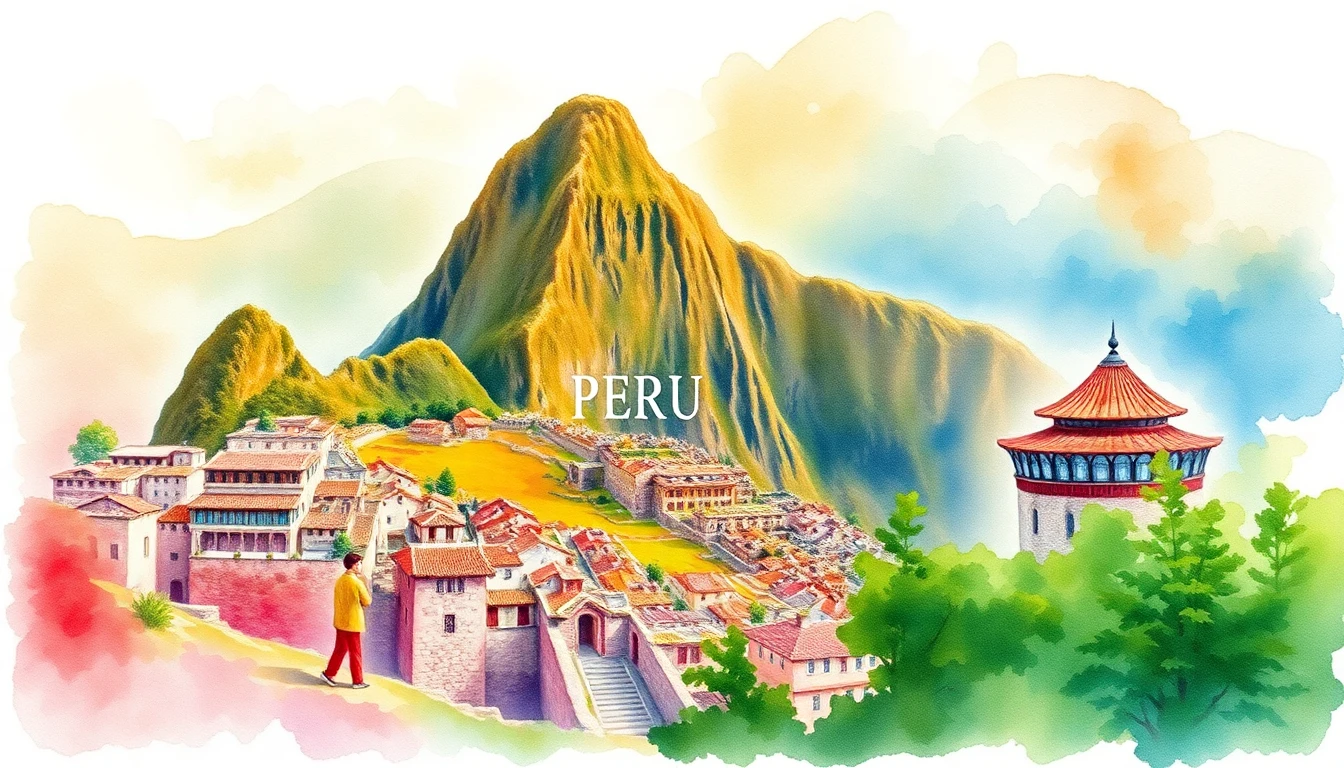Best Time to Visit India 2025: Complete Monsoon & Season Guide
⚡ Quick Answer
The best time to visit India is during the winter season (October-March) for pleasant weather, clear skies, and comfortable temperatures. Summer (April-June) brings extreme heat, while monsoon season (June-September) offers lush landscapes but frequent rainfall and high humidity.
Standing before the Taj Mahal as the first rays of dawn illuminate its marble dome in soft pink hues, or watching the sunset paint Rajasthan's golden city of Jaisalmer in brilliant orange – these are the India moments that live forever in memory. But India's vast subcontinent spans multiple climate zones, from the snow-capped Himalayas to tropical beaches, creating a complex weather puzzle that can make or break your journey through this incredible country.
Having traveled extensively across India's diverse regions over the past twelve years – from Kerala's backwaters during monsoon season to Rajasthan's deserts in peak winter, from the Himalayan foothills in spring to Mumbai's beaches in the heat of summer – I've learned that timing in India isn't just about comfort, it's about accessing the soul of this extraordinary land when it reveals its most magnificent aspects.
India's climate follows ancient rhythms that have shaped its culture, festivals, agriculture, and daily life for millennia. The arrival of monsoons is celebrated as a blessing, winter brings harvest festivals, and summer drives people to hill stations and holy rivers. Understanding these patterns doesn't just help you plan a comfortable trip – it opens doorways to experiencing India as locals do, following seasonal traditions that connect you to the deepest currents of Indian civilization.
Understanding India's Complex Climate
India's climate is dominated by the monsoon system, a massive seasonal wind pattern that brings life-giving rains to the subcontinent. But calling India's weather simply "monsoon-based" vastly oversimplifies a country where you can experience snow, tropical heat, and temperate conditions all within a few hundred kilometers of each other.
The country experiences three primary seasons: winter (October-March), summer (April-June), and monsoon (June-September). However, these seasons manifest differently across India's diverse geography. The Himalayas create their own weather patterns, the Thar Desert experiences extreme temperature swings, coastal areas benefit from moderating sea breezes, and the Western Ghats create unique microclimates that support everything from tropical rainforests to cool hill stations.
What makes India's climate fascinating – and sometimes challenging for travelers – is how dramatically it varies not just by region, but by elevation and proximity to water bodies. You can escape Delhi's 45°C summer heat by traveling to Shimla's 20°C mountain air, or find relief from Mumbai's monsoon humidity on the beaches of Goa. This diversity means that with proper planning, you can find pleasant weather somewhere in India year-round.
India by Season
India's three distinct seasons create vastly different travel experiences. From the perfect weather of winter to the dramatic beauty of monsoons, here's your complete guide to India's seasonal rhythms.
❄️ Winter (Oct - Mar)
Peak Season • Perfect Weather • Festival Time
🌡️ Weather
15-25°C (59-77°F) • Low humidity • Clear skies (check IMD weather)
🏆 Highlights
- • Perfect sightseeing conditions
- • Major festivals (Diwali, Holi)
- • Excellent visibility for photography
- • Comfortable outdoor activities
⚠️ Considerations
- • Highest accommodation prices
- • Crowded tourist attractions
- • Advance booking essential
🔥 Summer (Apr - Jun)
Extreme Heat • Hill Station Season • Regional Variations
🌡️ Weather
30-45°C (86-113°F) • Very hot • Pre-monsoon humidity
🏆 Highlights
- • Hill stations at their best
- • Lower tourist crowds
- • Mango season begins
- • Good for Himalayan trekking
⚠️ Considerations
- • Dangerous heat in plains
- • Limited outdoor activities
- • Dust storms possible
🌧️ Monsoon (Jun - Sep)
Heavy Rains • Lush Landscapes • Cultural Significance
🌡️ Weather
25-35°C (77-95°F) • High humidity • Heavy rainfall
🏆 Highlights
- • Spectacular waterfalls
- • Lush green landscapes
- • Cultural monsoon celebrations
- • Dramatic photography opportunities
⚠️ Considerations
- • Frequent travel disruptions
- • Flooding in some areas
- • High humidity levels
Winter: India's Golden Season
Winter in India is pure magic – a time when the country reveals its most captivating face. From October through March, the subcontinent basks in comfortable temperatures, clear blue skies, and low humidity that makes every outdoor experience a pleasure. This is when India's monuments stand in sharp relief against cloudless skies, when heritage walks become delightful rather than endurance tests, and when even chaotic cities like Delhi and Mumbai feel welcoming.
I'll never forget my first winter sunrise at the Taj Mahal. Arriving in December darkness, I watched the white marble slowly emerge from the mist as the sun painted it in shades of pink and gold. The cool morning air made the early wake-up call worthwhile, and by 9 AM, when crowds would normally make photography challenging, the perfect weather had everyone lingering outdoors, creating a festive atmosphere rather than rushed tourism.
Winter is festival season in India, and the weather plays a crucial role in these celebrations. Diwali in November transforms cities into galaxies of lights, with comfortable temperatures encouraging evening celebrations. Holi in March becomes a joyous explosion of colors, made perfect by spring-like weather that allows for all-day outdoor festivities. Desert festivals in Rajasthan, camel fairs, and cultural events across the country reach their peak during these months.
Different regions showcase unique winter personalities. Rajasthan's desert cities like Jaipur and Udaipur enjoy perfect weather for exploring palaces and forts. Kerala's backwaters offer gentle temperatures ideal for houseboat journeys. Goa's beaches reach their peak season with comfortable warmth and minimal rainfall. Even northern India, which can be brutally hot in summer, becomes pleasant for temple hopping, market exploration, and heritage tours.
Summer: Seeking Refuge in the Hills
Indian summers are legendary for their intensity. From April through June, much of the country experiences temperatures that can genuinely be dangerous, with some areas recording highs above 48°C (118°F). This is when the British colonial practice of retreating to hill stations makes perfect sense – it's not just about comfort, it's about survival and maintaining sanity in the face of relentless heat.
However, summer in India isn't uniformly brutal. The Himalayas come alive during these months, with trekking routes opening after winter snows melt and mountain flowers blooming in spectacular displays. Hill stations like Shimla, Manali, Darjeeling, and Ooty transform from quiet winter retreats into bustling summer capitals, offering cool respite with temperatures 15-20°C lower than the plains.
I spent one memorable June in Ladakh, where summer means finally being able to access this high-altitude desert kingdom. While Delhi sweltered at 45°C, Leh enjoyed pleasant 20°C days perfect for exploring monasteries and acclimatizing to the altitude. The landscape, barren and moon-like, possessed a stark beauty impossible to experience during the harsh Ladakhi winter when temperatures drop to -30°C.
Summer strategies in India require complete adaptation. In cities, life shifts to early mornings and late evenings. Markets open before dawn, afternoon becomes siesta time, and evening activities extend well past midnight. Air conditioning transitions from luxury to necessity, and cultural sites are best visited during the golden hours of early morning or late afternoon when the light is beautiful and temperatures marginally bearable.
Monsoon: The Arrival of Life
The monsoon in India is far more than weather – it's a cultural, economic, and spiritual phenomenon that shapes the rhythm of life across the subcontinent. When the southwest monsoon arrives in June, it brings relief from summer's brutal heat, life to parched landscapes, and joy to farmers whose livelihoods depend on these seasonal rains.
The monsoon's arrival is tracked with the precision of a space launch. The Indian Meteorological Department issues daily bulletins as the rain-bearing clouds advance from Kerala northward, and news channels display real-time monsoon progress maps. This isn't mere weather obsession – the monsoon directly impacts everything from GDP growth to wedding dates, from crop prices to political fortunes. Understanding this centrality helps travelers appreciate why Indians greet the first monsoon showers with such joy, dancing in the rain and offering prayers of gratitude.
Regional monsoon variations create fascinating travel opportunities. The Western Ghats act as a massive rain barrier, creating some of the world's wettest places on their windward side while leaving rain shadows on the leeward side. Cherrapunji in Meghalaya receives over 11,000mm of annual rainfall, mostly during monsoon, creating living root bridges and countless waterfalls. Meanwhile, just a few hundred kilometers away, the Thar Desert might receive only scattered showers that bring temporary lakes and trigger desert blooms – equally magical in their rarity.
Experiencing monsoon season in India offers insights into the country impossible to gain during other times. I remember monsoon evenings in Kerala, sitting on a houseboat as warm rain drummed on the roof while the backwaters rose around us. The air smelled of earth and growing things, birds emerged to celebrate the moisture, and the whole landscape seemed to exhale in gratitude after months of withering heat.
But monsoons demand respect and flexibility. Travel plans must account for delayed flights, flooded roads, and closed attractions. In cities like Mumbai, heavy rains can bring transportation to a standstill. Rural areas may become inaccessible, and some popular tourist destinations in regions like Uttaranchal close entirely during peak monsoon months due to landslide risks.
Yet monsoon season offers unique rewards for adventurous travelers. Waterfalls reach their most spectacular flows – the famous Dudhsagar Falls in Goa become thundering cascades visible from kilometers away. The Western Ghats transform into green paradises with mist-shrouded hills and blooming wildflowers. Cultural activities move indoors, offering opportunities to experience classical music concerts, traditional theater, and religious ceremonies that celebrate the life-giving rains.
The Shoulder Seasons: Hidden Treasures
October and March represent India's often-overlooked shoulder seasons, offering perhaps the best value for savvy travelers. October brings the excitement of post-monsoon freshness – landscapes remain green, waterfalls still flow strongly, and the oppressive humidity has lifted. This is when India feels reborn, with Dussehra celebrations adding cultural richness to your journey. Temperatures hover around a comfortable 25-30°C, tourist infrastructure has reopened after monsoon closures, but the winter rush hasn't yet begun.
March offers a different charm as winter transitions to summer. The weather remains pleasant for most of the month, especially in the mornings and evenings. Holi, the festival of colors, typically falls in March, offering one of India's most photogenic and joyous celebrations. Wildlife viewing reaches its peak as animals gather around water sources in national parks. The approaching heat means fewer tourists at major sites, and you can often negotiate better rates on accommodations and tours.
These shoulder months taught me the value of flexibility in Indian travel. During an October visit to Rajasthan, I experienced the best of both worlds – monsoon-fed lakes brimming with water around Udaipur's palaces and comfortable enough weather for desert camping in Jaisalmer. A March trip through South India allowed me to enjoy Kerala's beaches before the pre-monsoon humidity while catching the tail end of the cultural season in Chennai and Bangalore.
Month-by-Month India Weather Guide
Plan your India adventure with confidence using our detailed monthly breakdown. Each month offers unique experiences across India's diverse regions.
January
Peak Winter • Perfect Weather
Highlights:
- • Republic Day celebrations
- • Desert festivals in Rajasthan
- • Perfect for Golden Triangle
- • Kite Festival in Gujarat
February
Late Winter • Ideal Conditions
Highlights:
- • Taj Mahotsav in Agra
- • Perfect beach weather
- • Surajkund Crafts Fair
- • Khajuraho Dance Festival
March
Spring Begins • Festival Season
Highlights:
- • Holi festival celebrations
- • Last month for comfort
- • Wildlife viewing season ends
- • Spring flowers bloom
April
Early Summer • Rising Heat
Highlights:
- • Baisakhi harvest festival
- • Hill stations pleasant
- • Lower tourist prices
- • Good for Himalayas
May
Peak Summer • Extreme Heat
Highlights:
- • Best for Ladakh/Spiti
- • Hill station season
- • Buddha Purnima
- • Avoid plains regions
June
Monsoon Arrives • Mixed Weather
Highlights:
- • Monsoon reaches Kerala
- • Perfect for Ladakh
- • Rath Yatra in Puri
- • Pre-monsoon discounts
July
Peak Monsoon • Heavy Rains
Highlights:
- • Lush green landscapes
- • Ayurveda season in Kerala
- • Valley of Flowers blooms
- • Lowest prices
August
Late Monsoon • Independence Day
Highlights:
- • Independence Day (15th)
- • Krishna Janmashtami
- • Good for rain lovers
- • Ladakh still accessible
September
Monsoon Retreats • Transition
Highlights:
- • Ganesh Chaturthi
- • Post-monsoon greenery
- • Shoulder season begins
- • Good value period
October
Autumn • Festival Peak
Highlights:
- • Dussehra celebrations
- • Tourist season begins
- • Perfect weather starts
- • Gandhi Jayanti (2nd)
November
Early Winter • Diwali Magic
Highlights:
- • Diwali festival of lights
- • Perfect weather begins
- • Pushkar Camel Fair
- • Guru Nanak Jayanti
December
Peak Winter • Holiday Season
Highlights:
- • Christmas in Goa
- • New Year celebrations
- • Hornbill Festival Nagaland
- • Peak tourist season
India's Regional Climate Variations
India's vast size and diverse geography create multiple climate zones, each with distinct weather patterns and optimal travel times.
🏛️ Northern Plains & Golden Triangle
Best Time: October - March
The vast Indo-Gangetic plains experience extreme temperature variations. Winter offers perfect conditions for exploring Delhi, Agra, Varanasi, and the Golden Triangle circuit.
Winter (Oct-Mar)
15-25°C, clear skies
Summer (Apr-Jun)
35-45°C, dust storms
Monsoon (Jul-Sep)
28-35°C, high humidity
Key Cities
Delhi, Agra, Jaipur
🏜️ Rajasthan & Thar Desert
Best Time: November - February
Desert regions with extreme temperature swings. Winter is magical for camel safaris and fort exploration, while summer heat becomes unbearable.
Winter (Nov-Feb)
8-22°C, cold nights
Summer (Apr-Jun)
38-48°C, sandstorms
Monsoon (Jul-Sep)
30-38°C, minimal rain
Key Cities
Jaisalmer, Jodhpur, Udaipur
🌴 Kerala & Southern Coast
Best Time: October - March
Tropical climate with distinct monsoons. Winter offers perfect beach and backwater conditions, while monsoon brings ayurvedic treatments and lush landscapes.
Winter (Oct-Mar)
23-32°C, dry & pleasant
Summer (Apr-May)
28-38°C, humid
Monsoon (Jun-Sep)
24-30°C, heavy rains
Highlights
Backwaters, beaches, spices
🏔️ Himalayas & Hill Stations
Best Time: March - June, Sept - Nov
Altitude determines climate. Lower hills offer summer escapes, while high-altitude regions like Ladakh have brief accessible seasons.
Spring (Mar-Jun)
15-25°C, flowers bloom
Monsoon (Jul-Aug)
Landslide risks
Autumn (Sep-Nov)
Clear mountain views
Key Regions
Shimla, Manali, Ladakh
🏖️ Goa & West Coast
Best Time: November - February
Perfect beach weather with calm seas during winter. Monsoon brings rough seas but dramatic beauty and lower prices.
Peak (Nov-Feb)
20-32°C, perfect beaches
Shoulder (Mar-May)
25-35°C, hot but quiet
Monsoon (Jun-Sep)
Rough seas, green landscapes
Activities
Beaches, water sports, nightlife
🌲 Northeast India
Best Time: October - April
Receives India's heaviest rainfall. Winter and spring offer the best conditions for exploring this biodiversity hotspot.
Winter (Oct-Feb)
10-20°C, clear & dry
Spring (Mar-Apr)
15-25°C, rhododendrons bloom
Monsoon (May-Sep)
Extreme rainfall, floods
Key States
Assam, Meghalaya, Sikkim
Quick Regional Climate Comparison
| Region | Best Months | Avoid | Special Considerations |
|---|---|---|---|
| Golden Triangle | Oct-Mar | May-Jun | Book early for peak season |
| Kerala | Oct-Mar | Jun-Aug | Monsoon good for Ayurveda |
| Himalayas | Apr-Jun, Sep-Nov | Jul-Aug, Dec-Feb | Altitude affects accessibility |
| Rajasthan | Nov-Feb | Apr-Jun | Desert nights can be cold |
| Goa | Nov-Feb | Jun-Sep | Peak prices in December |
| Northeast | Oct-Apr | May-Sep | World's wettest region |
Understanding India's Diverse Microclimates
India's geography creates fascinating microclimates that can differ dramatically within short distances. The Western Ghats act as a massive wall, creating rain shadows and lush rainforests on opposite sides. The Himalayas block cold Central Asian winds, while coastal areas enjoy maritime moderation. Understanding these patterns helps you plan multi-region trips that maximize good weather.
I've experienced these dramatic variations firsthand – driving from Munnar's cool tea plantations at 1,600 meters down to Kochi's humid coast in just four hours, or traveling from Delhi's 45°C furnace to Shimla's pleasant 20°C in a single day. These transitions aren't just about temperature; they represent entirely different ecosystems, cultures adapted to their climates, and travel experiences that can vary from challenging to delightful based on timing.
The monsoon's behavior particularly showcases India's climatic complexity. While Kerala receives its first drops in early June, Rajasthan might see minimal rainfall throughout the season. The northeast experiences some of the world's heaviest rainfall, while the Thar Desert remains parched. Even within single states, variations are extreme – Tamil Nadu's Chennai relies on the northeast monsoon (October-December) while the Western Ghats nearby follow the southwest pattern.
Perfect India Itineraries by Season
Maximize your India experience with these tested seasonal routes that align destinations with their optimal weather windows.
❄️ Classic Winter Route (Oct-Mar)
2-Week Golden Triangle Plus
Perfect for first-time visitors
- Days 1-3: Delhi - Explore Old & New Delhi, Qutub Minar
- Days 4-5: Agra - Taj Mahal at sunrise, Agra Fort
- Days 6-8: Jaipur - Amber Fort, City Palace, local markets
- Days 9-11: Udaipur - Lake Palace, romantic city vibes
- Days 12-14: Mumbai or Goa - Urban energy or beach relaxation
Best Months: November-February
Highlights: Perfect weather, all attractions accessible
Book Ahead: 2-3 months for peak season
☀️ Summer Himalayan Escape (Apr-Jun)
3-Week Mountain Adventure
For mountain lovers and trekkers
- Days 1-4: Shimla & Manali - Hill station charm, adventure sports
- Days 5-10: Ladakh - Leh, Pangong Lake, Nubra Valley
- Days 11-14: Kashmir - Dal Lake, Gulmarg meadows
- Days 15-18: Dharamshala - Tibetan culture, McLeodganj
- Days 19-21: Rishikesh - Yoga capital, Ganges rafting
Best Months: May-June for high altitude
Highlights: Snow-capped peaks, blooming valleys
Altitude Note: Allow time for acclimatization
🌧️ Monsoon Magic Route (Jul-Sep)
2-Week Rain Shadow & Culture
For budget travelers and rain lovers
- Days 1-5: Ladakh - Dry trans-Himalayan landscapes
- Days 6-8: Jodhpur & Jaisalmer - Desert with cooling showers
- Days 9-11: Udaipur - Monsoon-filled lakes, palace views
- Days 12-14: Kerala - Ayurveda treatments, backwater serenity
Best Months: July-August
Highlights: 50% lower prices, lush landscapes
Pack: Quality rain gear essential
🎉 Festival Circuit Special
Celebration-Focused Journey
For cultural enthusiasts
- October: Dussehra in Mysore or Kullu
- November: Diwali in Jaipur or Varanasi
- November: Pushkar Camel Fair, Rajasthan
- March: Holi in Mathura/Vrindavan or Jaipur
- August: Onam in Kerala
Planning: Book 3+ months ahead
Experience: Unmatched cultural immersion
Tip: Join local families for authentic celebrations
Crafting Your Perfect Seasonal Journey
The art of India travel lies in aligning your interests with seasonal advantages. Winter rewards classic sightseeing with comfortable weather at iconic monuments. Summer opens high-altitude treasures inaccessible other times. Monsoon offers cultural depth and budget value for those willing to embrace unpredictability. Each season paints India in different colors – choose the palette that speaks to your travel soul.
Remember that India's size allows for creative seasonal combinations. A December trip might start with Rajasthan's desert festivals, move to Delhi's monuments, and conclude with Christmas on Goa's beaches. An April journey could escape the heat by ascending from Kerala's hill stations to Himalayan peaks. The key is understanding regional variations and planning transitions that follow favorable weather patterns.
Don't underestimate travel time between destinations. India's vast distances and variable infrastructure mean a rushed itinerary in any season becomes exhausting. Better to deeply explore fewer places than superficially tick boxes. The magic happens in unplanned moments – sunrise prayers by the Ganges, unexpected festival processions, conversations with fellow train passengers. Leave room for India to surprise you, regardless of the season.
Essential India Travel Planning
💰 India Budget by Season
Winter Season (Oct-Mar)
Peak season pricing but optimal conditions. Book early.
- • Heritage hotel: ₹8,000-25,000/night
- • Mid-range hotel: ₹3,000-8,000/night
- • Tours: Premium pricing
Summer Season (Apr-Jun)
Lower prices except hill stations. Heat affects comfort.
- • City hotel: ₹2,000-6,000/night
- • Hill station: ₹4,000-12,000/night
- • AC costs significant
Monsoon Season (Jun-Sep)
Lowest prices but weather challenges.
- • Hotel: ₹1,500-4,000/night
- • Tour discounts up to 50%
- • Flexible booking essential
🎒 India Packing Essentials
Year-Round Essentials
- • Strong sunscreen (Indian sun is intense)
- • Modest clothing for temples
- • Hand sanitizer and medications
- • Comfortable walking shoes
- • Power bank and universal adapter
Seasonal Additions
Winter:
- • Light jacket for northern regions
- • Warm clothes for hill stations
Summer:
- • Cooling products and electrolytes
- • Light, breathable clothing
Monsoon:
- • Waterproof gear and quick-dry clothes
- • Antifungal powder and medications
Weather-Smart Travel Tips for India
Successful India travel requires adapting to weather realities rather than fighting them. In summer, adopt local rhythms – start sightseeing at dawn when monuments are empty and temperatures bearable. Take long lunch breaks in air-conditioned spaces during peak heat. Resume activities in late afternoon when shadows lengthen and temperatures drop. This isn't just practical; it aligns you with how Indians have lived for centuries, creating more authentic cultural connections.
Monsoon travel demands waterproof everything – not just rain jackets but waterproof bags for electronics, quick-dry clothing that won't stay damp for days, and waterproof footwear that can handle flooded streets. But also pack for humidity – antifungal powder becomes essential, and you'll change clothes multiple times daily. Accept that plans will change, trains will delay, and some days the rain will win. These aren't failures but opportunities to practice patience and discover indoor India – museums, galleries, cafes where locals gather to wait out downpours.
Winter travel might seem straightforward, but India's winter varies dramatically by region and time of day. Desert areas like Jaisalmer can drop near freezing at night while reaching 25°C by noon. Northern plains experience dense fog that can ground flights and reduce visibility to meters. Hill stations might surprise you with snow. Layer strategically – a light jacket sufficient for Delhi might leave you shivering in Shimla. Many budget accommodations lack heating, so warm sleepwear becomes essential even in "warm" India.
Health Considerations by Season
Each Indian season brings specific health challenges requiring proactive management. Summer's extreme heat demands constant hydration – but not just water. Electrolyte replacement becomes critical as you'll sweat minerals faster than you can replace them with food. Heat exhaustion sneaks up on travelers who underestimate India's sun intensity. Symptoms like headaches, nausea, and fatigue often get attributed to culture shock when they're actually dehydration. Carry oral rehydration salts, drink before feeling thirsty, and never skip meals even if appetite wanes.
Monsoon season escalates risks of waterborne diseases and mosquito-borne illnesses like dengue and chikungunya. Street food, normally safe when hot and fresh, becomes riskier as hygiene standards slip in humidity. Stick to busy stalls with high turnover, avoid raw vegetables and cut fruits, and be extra cautious with water sources. Mosquito protection transcends convenience to become health essential – use repellents containing DEET, wear long sleeves during dawn and dusk, and consider permethrin-treated clothing for jungle or rural areas.
Winter might seem healthiest, but the season brings its own challenges. Air pollution peaks in northern cities from October through January as crop burning combines with winter temperature inversions. Delhi's air quality can reach hazardous levels, triggering respiratory issues even in healthy individuals. Pack N95 masks, limit outdoor activities on high-pollution days, and consider air-purified accommodations if you have respiratory sensitivities. Cold and flu viruses also circulate more during tourist season – hand hygiene and avoiding crowded spaces during peak illness periods helps maintain health.
Booking Strategies for Each Season
India's seasonal pricing varies dramatically, and smart booking can save thousands while securing better experiences. For peak winter season (November-February), book accommodations 2-3 months ahead for popular destinations like Rajasthan, Kerala, and Goa. Hotels often offer early-bird discounts, and you'll have the full selection before properties fill. Train tickets for popular routes open 120 days in advance through IRCTC (Indian Railways) and sell out quickly for AC classes – set calendar reminders and book immediately when windows open. Check India's e-Visa portal for visa requirements well in advance.
Shoulder season bookings (October, March) offer more flexibility. You can often book 3-4 weeks ahead and still find good options, though festival periods require earlier planning. This is when negotiation works best – hotels have availability but want to fill rooms before peak season or clear inventory as season ends. Call properties directly, mention longer stays, and ask for upgrades. I've received 40% discounts and suite upgrades simply by booking directly during these transition periods.
Monsoon and summer bookings can happen almost spontaneously except for hill stations and rain-shadow regions where domestic tourists concentrate. Many hotels offer "monsoon packages" with significant discounts, included meals, and ayurvedic treatments. Don't book non-refundable rates during monsoon – weather might close attractions or make travel impossible. Summer in the plains sees hotels desperate for guests, creating opportunities for luxury experiences at budget prices. That five-star palace hotel in Jodhpur charging $500 in December might welcome you for $100 in May, with upgraded rooms and personalized service from staff grateful for guests.
Frequently Asked Questions
What is the best time to visit India?
The best time to visit India is during the winter season (October-March) when temperatures are pleasant (15-25°C), humidity is low, and rainfall is minimal. This period offers ideal conditions for sightseeing, outdoor activities, and cultural exploration across most regions. November through February represents the absolute peak, with perfect weather nationwide, though expect higher prices and crowds. For budget travelers, the shoulder seasons of October and March offer excellent weather with fewer tourists.
When is monsoon season in India?
India's main monsoon season runs from June to September, with the southwest monsoon arriving in Kerala around June 1st and gradually covering the entire country by mid-July. The northeast monsoon affects Tamil Nadu and parts of Andhra Pradesh from October to December. Monsoons bring 70-80% of India's annual rainfall, with the Western Ghats and northeast receiving the heaviest precipitation. While challenging for travel, monsoon season offers lush landscapes, dramatic skies, fewer crowds, and significant discounts on accommodations.
Should I avoid India during summer?
Summer (April-June) brings extreme heat to most of India, with northern plains reaching 45°C (113°F) and dangerous heat waves. However, it's the perfect time for hill stations like Shimla, Manali, Darjeeling, and Ooty, which offer cool escapes. This is also the only time to visit high-altitude regions like Ladakh, Spiti Valley, and parts of Uttarakhand. Beach destinations remain bearable with sea breezes, and you'll find significant discounts on accommodations outside hill stations.
What's the best month to visit the Golden Triangle?
November through February are ideal for the Golden Triangle (Delhi-Agra-Jaipur), with November and February offering the best balance of pleasant weather and manageable crowds. Temperatures range from 15-25°C with clear skies perfect for photographing the Taj Mahal. December-January see peak crowds and prices but offer the coolest temperatures. Avoid April-September when extreme heat and monsoon rains make sightseeing uncomfortable. March is acceptable but warming, while October can still be humid after the monsoon.
When should I visit Kerala?
October to March is the best time for Kerala, with December-January being peak season for backwaters, beaches, and wildlife sanctuaries. September offers a unique monsoon experience with ayurvedic treatments at their most effective and landscapes at their greenest. April-May work for hill stations like Munnar and Wayanad. Avoid June-August for beach activities due to rough Arabian Sea conditions, though this period offers dramatic monsoon beauty and 40-50% discounts on accommodations.
What's the best time for trekking in the Himalayas?
March to May and September to November offer ideal trekking conditions in most Himalayan regions, with clear mountain views and stable weather. For high-altitude areas like Ladakh, Spiti, and Pin Valley, June to September is the only accessible period when passes are snow-free. Valley of Flowers blooms spectacularly in July-August. Winter (December-February) brings snow trekking opportunities in lower altitudes but many high passes close. Avoid monsoon season (July-August) in the eastern Himalayas due to landslide risks.
Can I visit India during Diwali?
Diwali (October/November) is magical but challenging for travelers. Expect spectacular light displays, fireworks, and cultural immersion, but also doubled accommodation prices, fully booked hotels, and limited transportation as Indians travel home for celebrations. Book everything 2-3 months in advance. Cities become extremely noisy with firecrackers, and many shops/restaurants close for 2-3 days. However, witnessing India's biggest festival offers unforgettable cultural experiences, especially in Jaipur, Varanasi, and Amritsar.
What regions are best during monsoon season?
Ladakh, Spiti Valley, and other trans-Himalayan regions receive minimal monsoon rainfall, making June-September their best season. Rajasthan's desert areas see light, manageable showers that cool temperatures without causing major disruptions. Tamil Nadu's rain shadow regions remain relatively dry. Kerala offers beautiful monsoon experiences with ayurvedic treatments, though beaches aren't suitable. Avoid the Western Ghats, Mumbai, northeastern states, and Himalayan foothills during peak monsoon due to extreme rainfall and landslide risks.
How do Indian festivals affect travel planning?
Major festivals significantly impact travel logistics and prices. Diwali (Oct/Nov), Dussehra (Sept/Oct), and Holi (March) see domestic tourism surge with transport bookings filling months ahead. During festivals, expect doubled hotel rates, crowded attractions, and many businesses closing. However, festivals offer incredible cultural experiences - Pushkar Camel Fair, Hornbill Festival in Nagaland, and regional celebrations provide unique insights. Book accommodations 2-3 months early for festival periods and embrace the celebratory chaos rather than fighting it.
What should I pack for different Indian seasons?
Winter (Oct-Mar): Light jacket for evenings, warm clothes for northern regions and hill stations, sunscreen, comfortable walking shoes, and modest clothing for temples. Summer (Apr-Jun): Light, breathable cotton clothes, strong sunscreen (SPF 50+), sunglasses, hat, electrolyte supplements, and cooling scarves. Monsoon (Jun-Sep): Waterproof jacket, quick-dry clothing, waterproof bag covers, anti-fungal powder, mosquito repellent, and waterproof footwear. Year-round essentials include hand sanitizer, basic medications, power bank, universal adapter, and modest clothing for religious sites.
Making the Most of Your India Journey
After years of exploring India across every season, I've learned that there's no universally "wrong" time to visit – only times that require different approaches and expectations. The scorching heat of a Delhi summer taught me the art of siesta and the joy of mango lassis. Monsoon travels through Maharashtra showed me waterfalls I never knew existed and introduced me to the contemplative pleasure of rain-watching from ancient cave temples. Even the crushing crowds of peak winter season have their charm, creating a festival atmosphere at every monument.
Your ideal time to visit India depends on multiple factors beyond just weather. Budget travelers should target shoulder seasons (October and March) or brave the monsoon for 50-70% discounts. Photography enthusiasts need the clear skies of winter or the dramatic clouds of late monsoon. Adventure seekers should plan around specific activities – summer for Ladakh, post-monsoon for rafting, winter for desert camping. Cultural immersion peaks during festival seasons, regardless of weather challenges.
Practical Timing Strategies
Smart India travel often means combining regions with complementary seasonal patterns. While Delhi swelters in May, Kashmir blooms with spring flowers. When Mumbai floods in July, Ladakh basks in perfect sunshine. December might price you out of Goa, but Tamil Nadu offers equally beautiful beaches at half the cost. This regional diversity means you can craft year-round itineraries that always include somewhere wonderful.
Consider also the rhythm of Indian tourism. International tourists peak from October to March, while domestic tourism surges during school holidays (May-June) and festival periods. Business travel drops during Diwali week, making luxury hotels surprisingly affordable despite the season. Understanding these patterns helps you find pockets of value and tranquility even during traditionally busy periods.
The Climate Change Factor
India's weather patterns are evolving with climate change, making flexibility more important than ever. Monsoons have become less predictable, sometimes arriving late or delivering intense bursts rather than steady rain. Winters are shortening in some regions while becoming more severe in others. Heat waves now extend into traditionally cooler months. This unpredictability means travelers should prepare for wider weather variations and maintain flexible itineraries.
Yet these changes also create opportunities. Late monsoons extend the summer trekking season in the Himalayas. Warmer winters make December beach visits more appealing. Unseasonal rain brings unexpected relief to typically dry periods. The key is staying informed through weather apps and local sources rather than relying solely on historical patterns.
Your Personal India Season
Ultimately, the best time to visit India is when you can approach it with curiosity, patience, and openness to unexpected experiences. I've seen travelers miserable in perfect weather because they couldn't adapt to India's intensity, and others finding joy in monsoon floods because they embraced the adventure. India doesn't conform to visitor expectations – it transforms them.
Whether you choose the popular winter months or venture into challenging seasons, India will reward your journey with experiences that resonate long after you return home. The sunrise over the Ganges feels equally sacred in December's chill or August's humidity. The smile of a chai wallah warms your heart regardless of the thermometer. The chaos of an Indian market enchants whether you're sweating or shivering.
Ready to Discover Incredible India?
Armed with this seasonal knowledge, you're ready to plan an India journey that aligns with your travel style, budget, and dreams. Remember that India's magic transcends weather – it lies in the warmth of its people, the depth of its culture, and the transformation it sparks in travelers brave enough to embrace its complexity.
Choose your season wisely, pack appropriately, and prepare for the adventure of a lifetime. India doesn't just offer different weather throughout the year – it offers different worlds, each waiting to expand your understanding of this incredible subcontinent.
Safe travels, open hearts, and may your Indian journey exceed every expectation. Namaste! 🙏
🔗 Related Articles
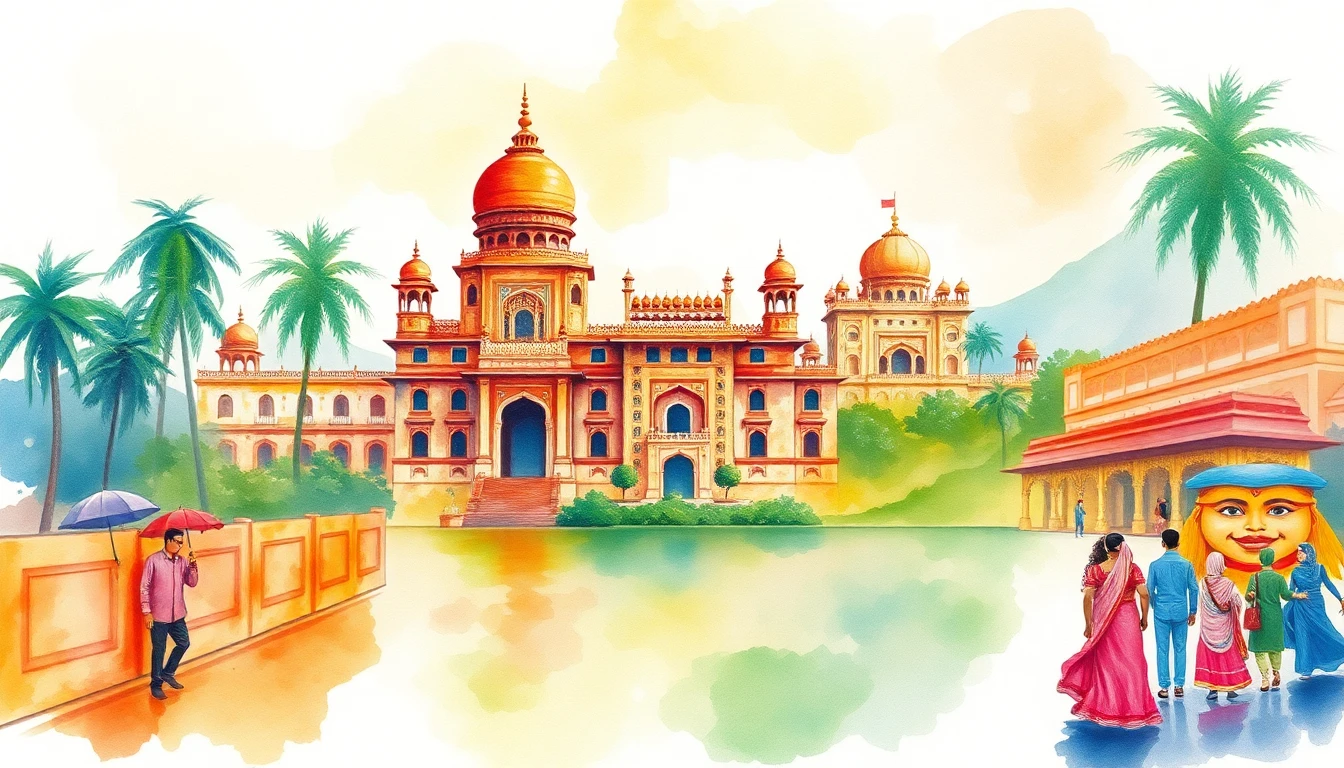
Best Time to Visit India 2025: Complete Monsoon & Season Guide
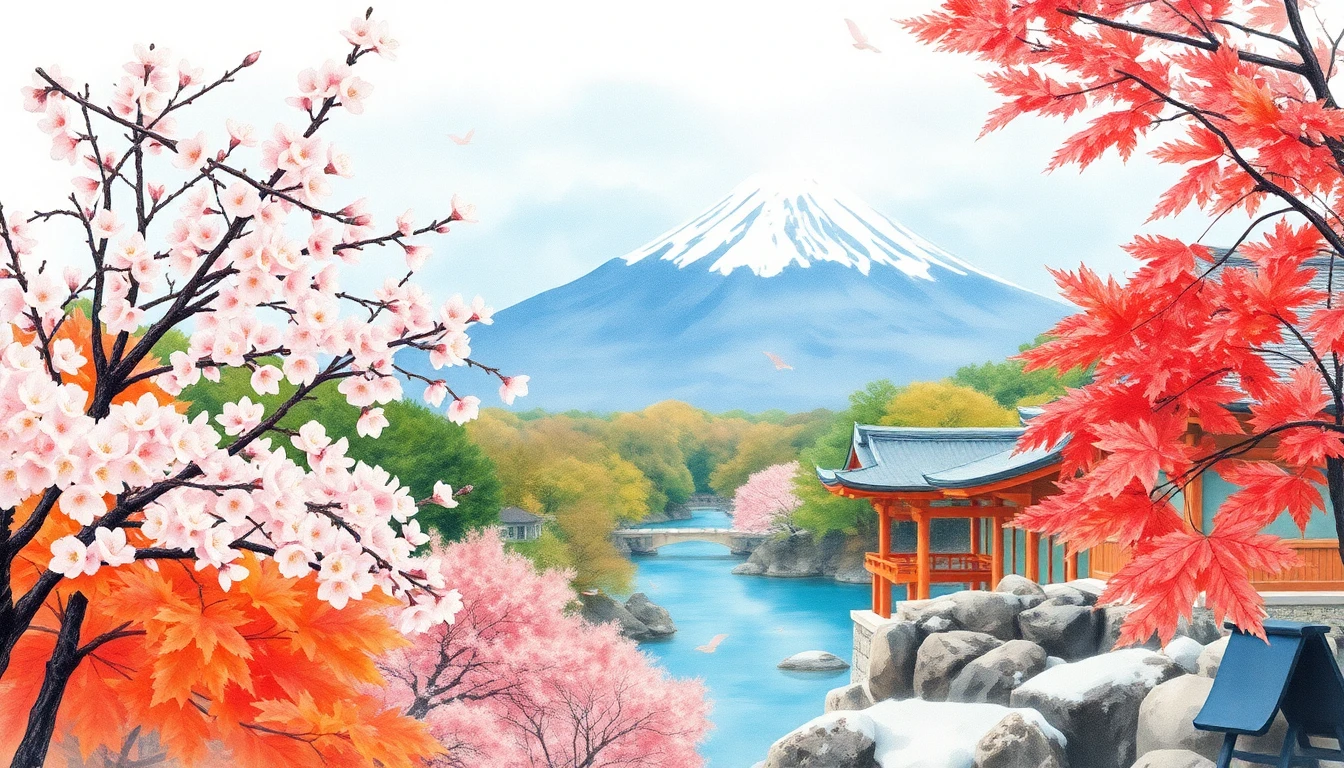
Best Time to Visit Japan 2025: Complete Season Guide
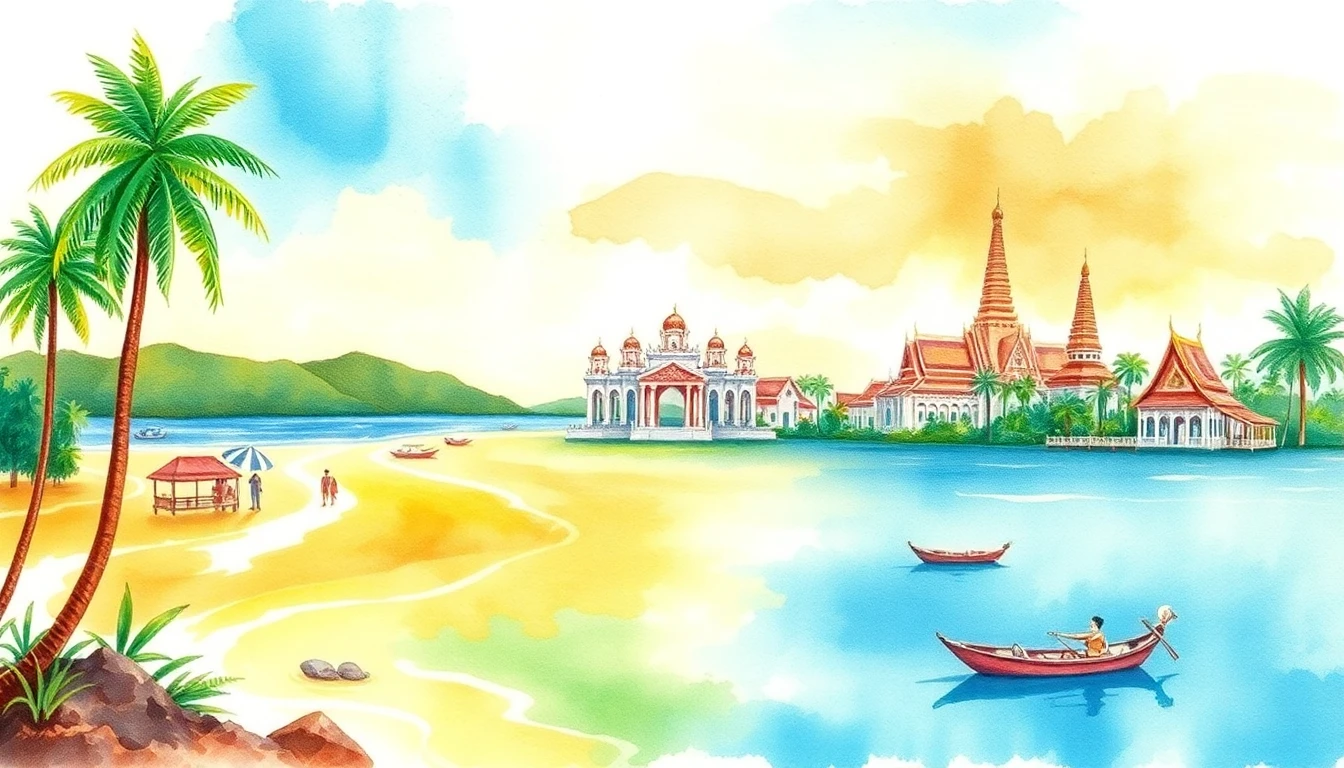
Best Time to Visit Thailand 2025: Complete Weather & Festival Guide
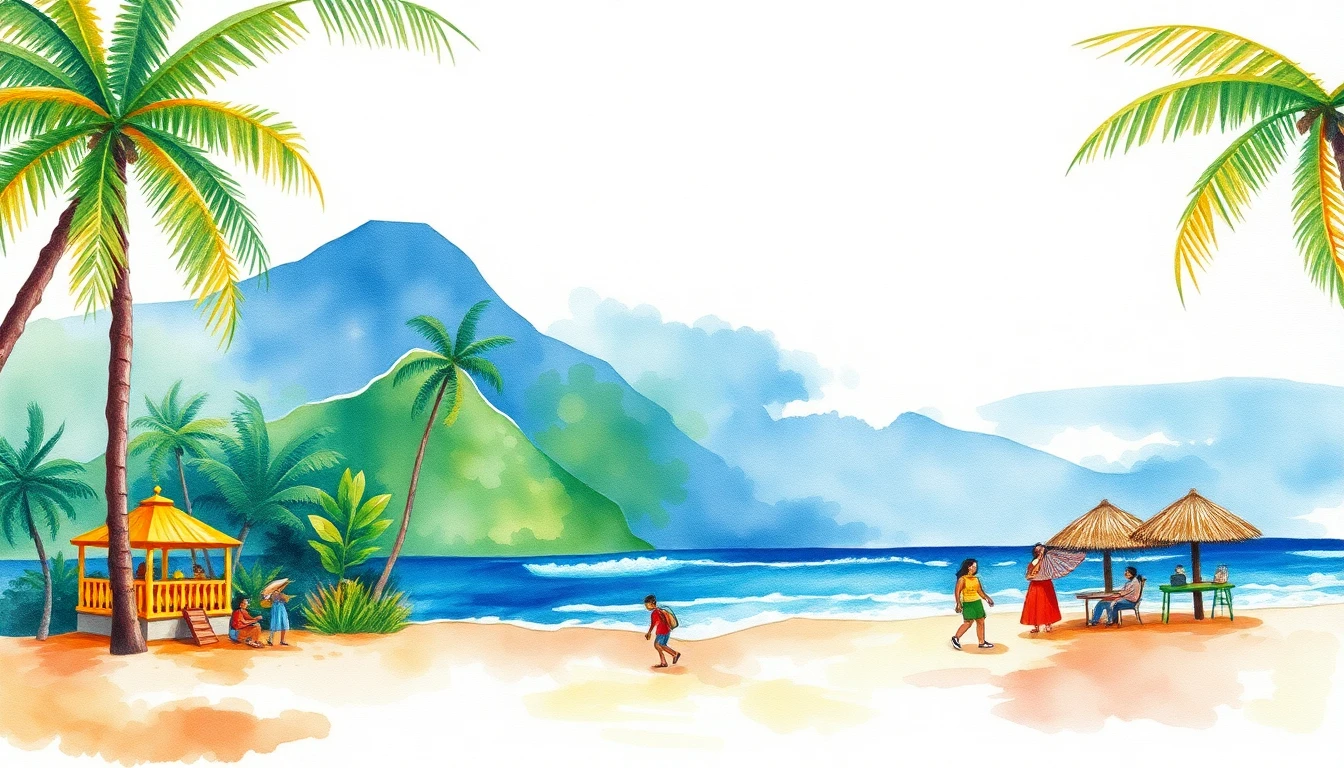
Best Time to Visit Brazil 2025: Complete Season Guide
